
According to J. R. R. Tolkien’s novels, Morgoth’s crown did not survive into the Second Age, but The Rings of Power acknowledged this deviation from the established lore. Galadriel was shocked to see the crown intact, and Adar said, “There are many stories of what happened after the Silmarils were pried from its setting, but I was there when Sauron refired it to fit himself.” Throughout The Lord of the Rings novel, Tolkien made some references to Morgoth’s crown and its relation to the Silmarils, and he elaborated upon this in The Silmarillion, which describes the ancient history of Middle-earth. Unlike what Adar’s quote implied, Morgoth’s crown did not have any combat capabilities, but it was unique in another way — it was essentially Middle-earth’s version of the Infinity Gauntlet from the Marvel Cinematic Universe.
The Iron Crown Protected Morgoth From the Silmarils
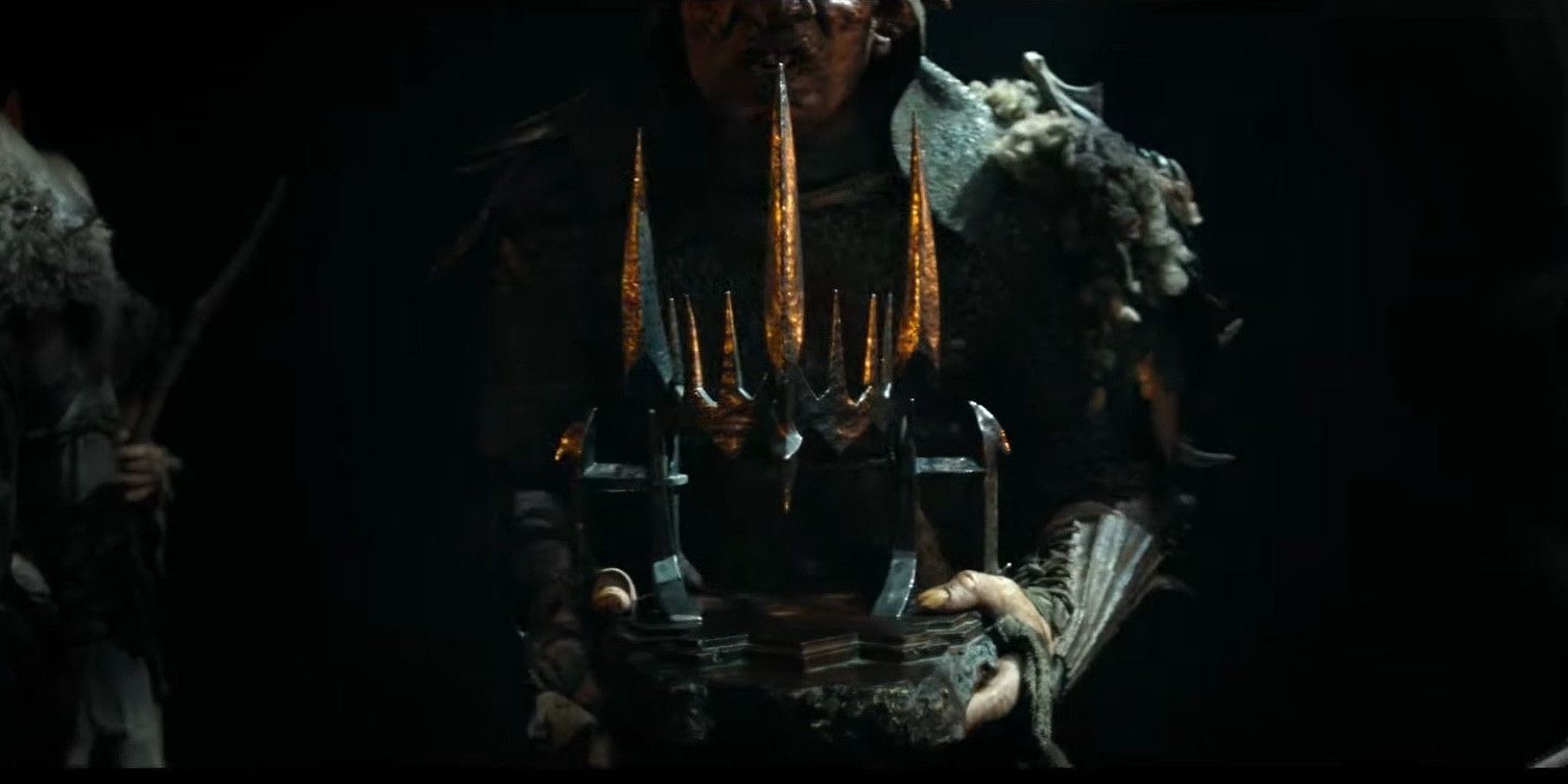
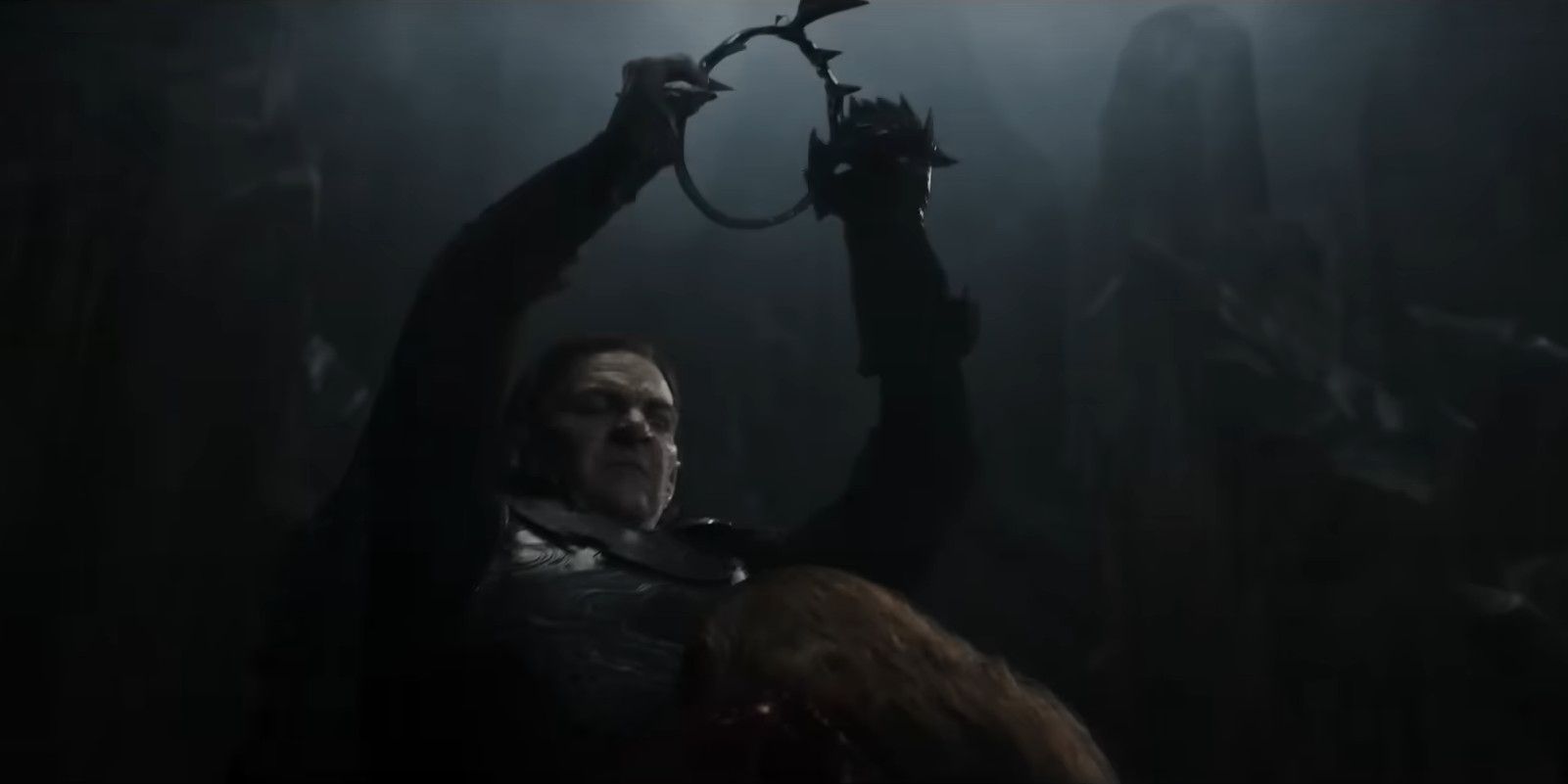
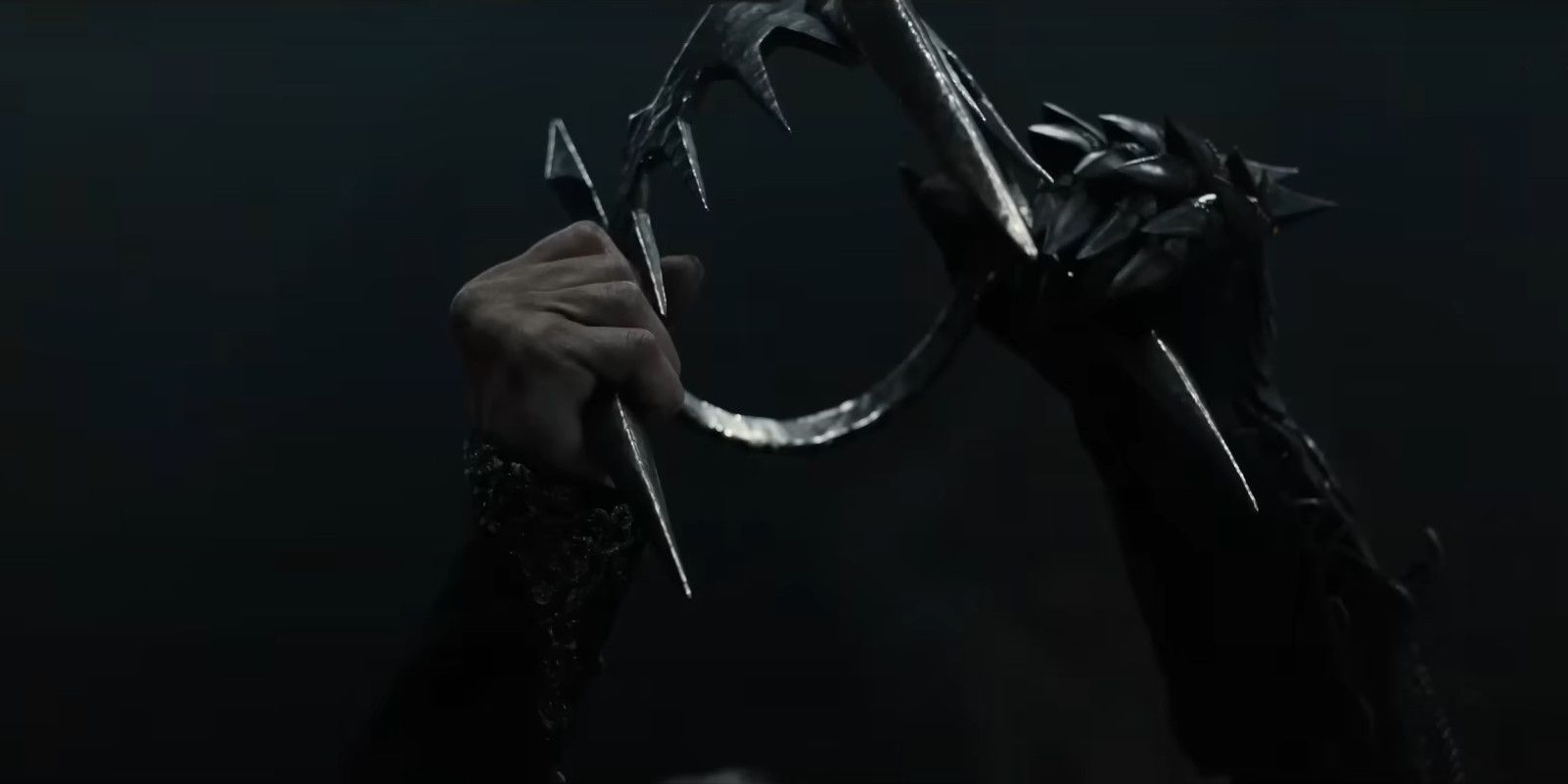
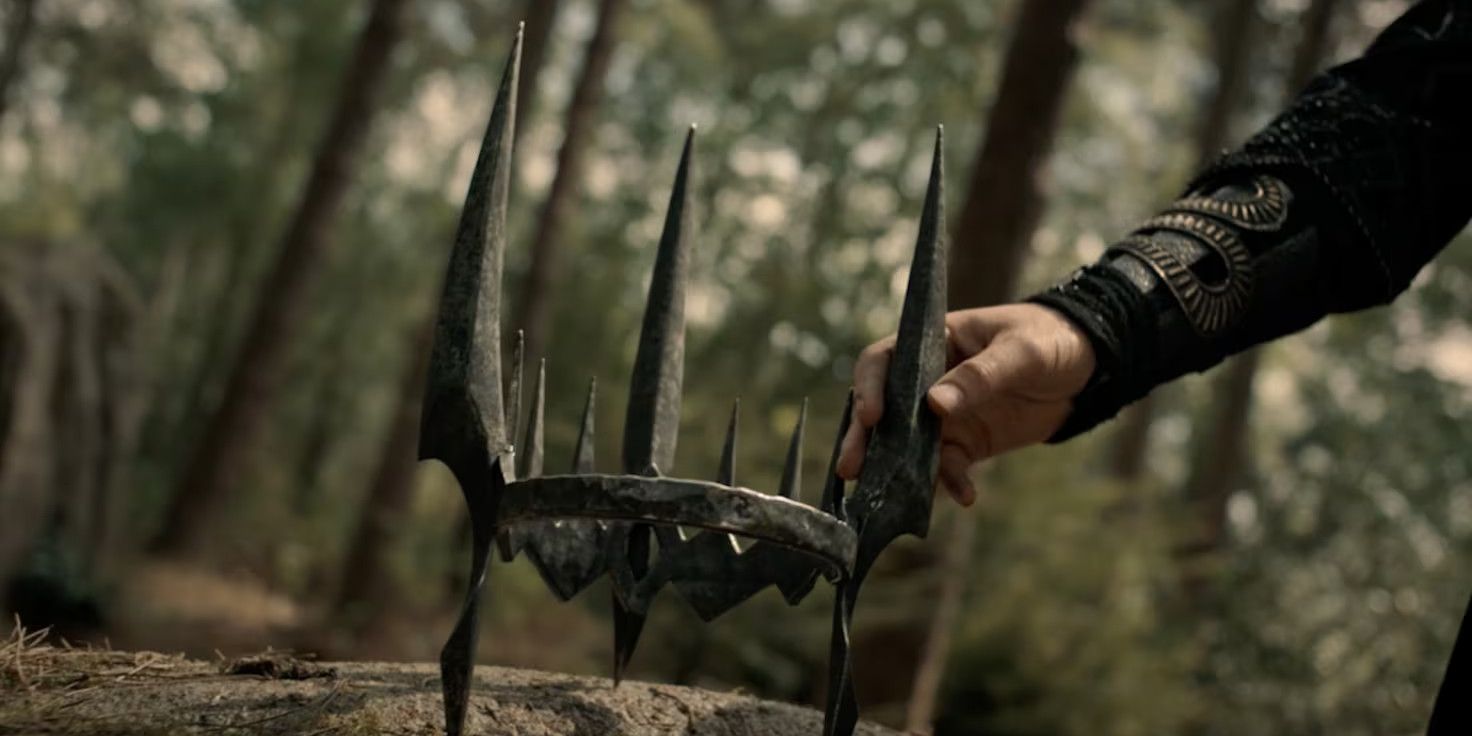
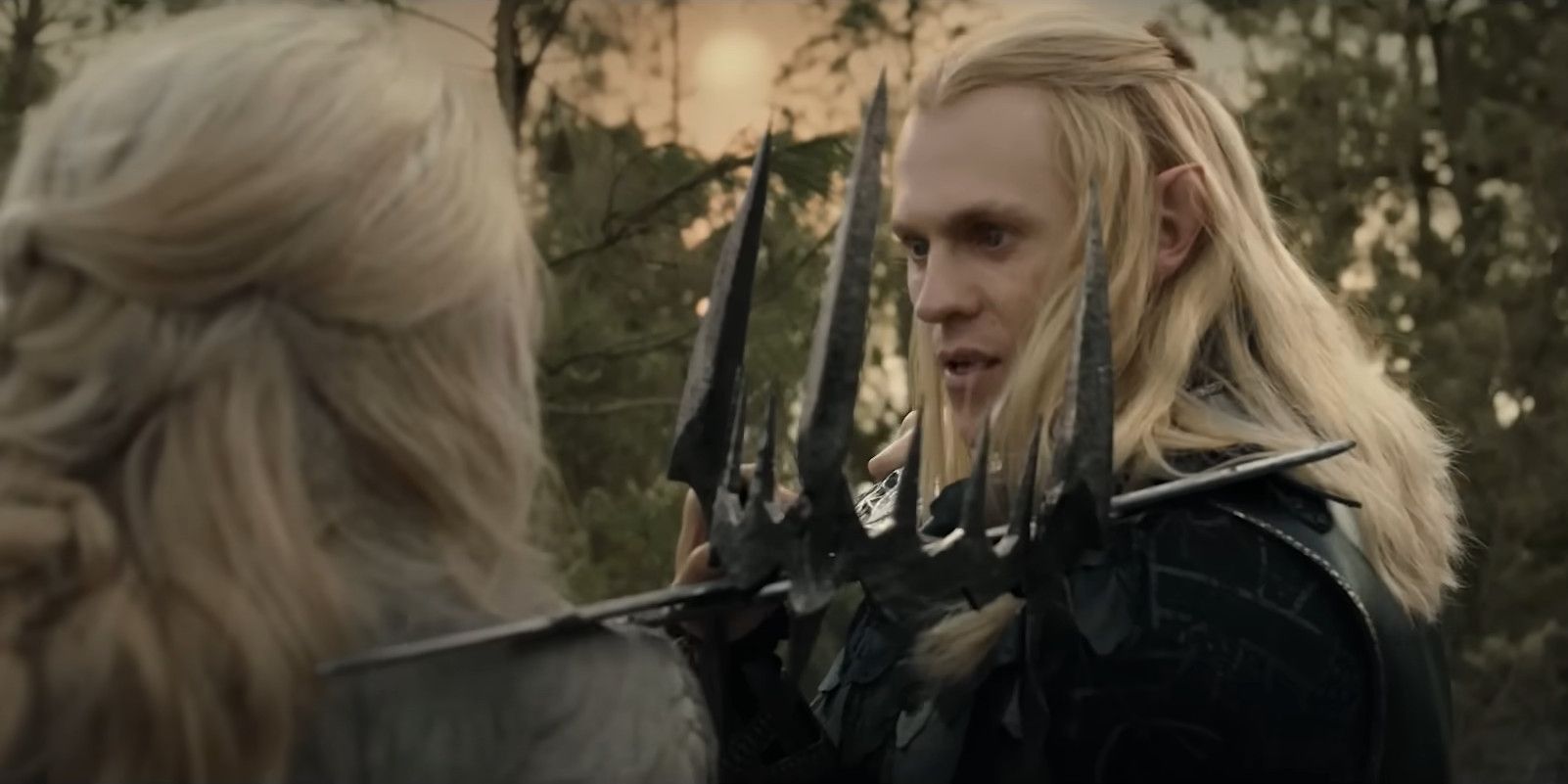
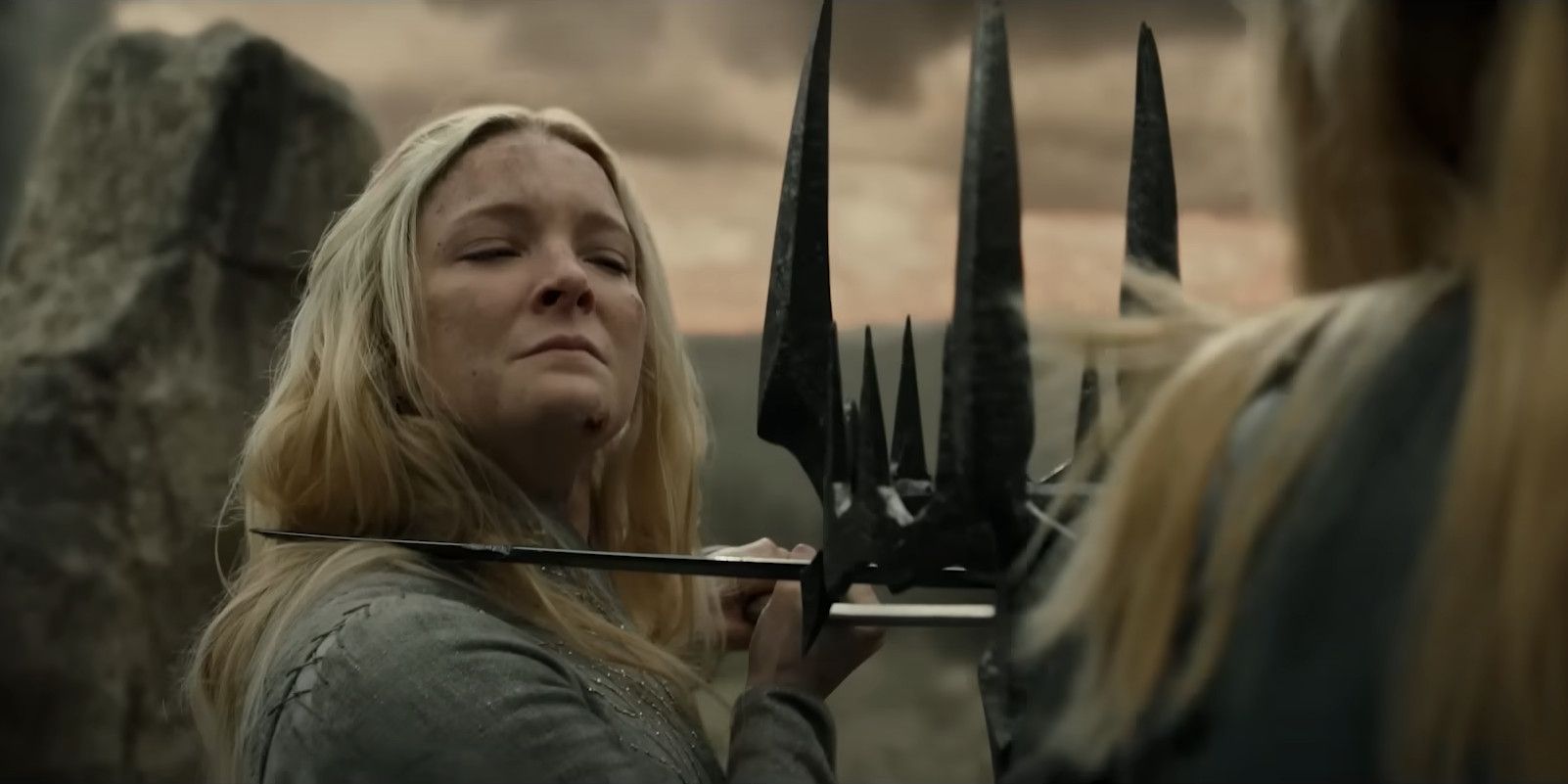






In the series premiere of The Rings of Power, Galadriel explained that Morgoth destroyed the Two Trees of Valinor, after which the Elves sailed to Middle-earth to fight him. This was accurate to The Silmarillion, but it was far from the full story. When Morgoth destroyed the Two Trees, darkness came over Valinor, and Morgoth used the chaos as an opportunity to wreak even more havoc. He killed Finwë, the first High King of the Noldor, and stole his precious jewels. He fed most of them to the spiderlike monster Ungoliant as payment for helping him destroy the Two Trees, but there were three that Morgoth wanted to keep for himself: the Silmarils, magical gems created by Celebrimbor’s grandfather, Fëanor. It was the theft of the Silmarils rather than the destruction of the Two Trees that served as the Elves’ main motivation for seeking vengeance against Morgoth, and it was Fëanor who led the charge.
The Silmarils contained the holy light of the Two Trees and were blessed by the Queen of the Valar, so they burned any evil beings who touched them, and in Tolkien’s legendarium, no one was more evil than Morgoth. In the section “Of the Flight of the Noldor” from The Silmarillion, Tolkien wrote, “[Morgoth’s] hands were burned black by the touch of those hallowed jewels, and black they remained ever after; nor was he ever free from the pain of the burning, and the anger of the pain.” He endured this long enough to escape Valinor with the Silmarils, but he sought a way to circumvent the agony they caused him. Much like Thanos did to withstand the power of the Infinity Stones, Morgoth placed the Silmarils in a piece of armor, but instead of a gauntlet, he created “a great crown of iron.” Tolkien gave it the surprisingly straightforward name of the Iron Crown. Unlike the Infinity Stones, the Silmarils did not grant any special abilities; Morgoth wore them for purely psychological reasons. He wanted to flaunt his theft of Fëanor’s most prized possessions and prove that he could dominate something even as holy as the light of the Two Trees. For the rest of his time in Middle-earth, Morgoth never willingly removed the Iron Crown from his head.
Aragorn’s Ancestor Stole a Silmaril From Morgoth’s Crown
The Iron Crown next became relevant in the year 465 of the First Age. Beren, an ancestor of Aragorn from The Lord of the Rings, fell in love with an Elven princess named Lúthien, but Lúthien’s father, King Elu Thingol, would only permit them to marry if Beren completed a dangerous task: stealing a Silmaril from Morgoth. The next year, Beren and Lúthien set out for Morgoth’s stronghold, Angband. Lúthien possessed powerful magic due to her mother being a Maia, so she was able to sing a song that put Morgoth and his minions into a deep slumber. In the section “Of Beren and Lúthien” from The Silmarillion, Tolkien wrote, “Suddenly [Morgoth] fell, as a hill sliding in an avalanche, and hurled like thunder from his throne lay prone upon the floors of hell. The iron crown rolled echoing from his head. All things were still.” Using a knife, Beren began to wrest a Silmaril from the Iron Crown.
Beren’s knife was called Angrist, and it was forged by Telchar, the same Dwarven smith who created Elendil’s legendary sword, Narsil.
Beren removed one successfully, but foolishly, he wanted to “go beyond his vow” by bringing all three Silmarils to Thingol. When he attempted to remove the second, the blade of his knife shattered and struck Morgoth, waking him up. As Beren and Lúthien fled, a giant werewolf named Carcharoth blocked their escape from Angband. Carcharoth bit off Beren’s hand, including the Silmaril that he had been holding, which burned the evil creature from within. Beren eventually killed Carcharoth, reclaimed the Silmaril, and gave it to Thingol, but he died of his injuries soon after, and Lúthien’s grief was so overwhelming that she joined him in death. The Valar took pity on Beren and Lúthien and resurrected them, though the latter needed to sacrifice her Elven immortality in the process. Morgoth, meanwhile, was furious about the loss of a Silmaril, but he continued to wear the other two in his Iron Crown, and they would prove far more difficult for his enemies to obtain.
The Valar Used the Iron Crown Against Morgoth

Those Silmarils remained in Morgoth’s crown until his defeat during the War of Wrath, a decades-long conflict that brought the First Age to an end. Eönwë, the Herald of the Valar, planned to bring the Silmarils back to Valinor to keep them safe, but before he could, the Sons of Fëanor stole them. Though they had finally accomplished what they vowed to when Morgoth initially stole the Silmarils, their satisfaction was short-lived, as they had done so many evil deeds in their relentless pursuit of the Silmarils that the gems now burned them just as they had burned Morgoth and Carcharoth. Driven to madness and despair, they cast the Silmarils away, one into the depths of the ocean and another into a fiery chasm, where they remained even during the events of The Lord of the Rings. Though that was the end of the Silmarils in Tolkien’s lore, it was not the end of the Iron Crown.
The section “Of the Voyage of Eärendil and the War of Wrath” described what happened to the Iron Crown after Morgoth’s defeat. One of the Valar — most likely Aulë, the Vala of crafting and forging — “beat [it] into a collar” and placed it around Morgoth’s neck. The Valar also wrapped Morgoth in an unbreakable chain called Angainor. The Silmarillion did not go into much detail about this chain, but in an earlier draft, Tolkien explained that it was made of tilkal, a magical alloy combining the properties of copper, silver, tin, lead, iron, and gold. Once Morgoth was sufficiently bound, the Valar imprisoned him in the Timeless Void, where he could no longer harm the people of Middle-earth or Valinor. The history of the Iron Crown was deeply ironic. It originally served as a symbol of Morgoth’s pride and power, but the Valar turned it into a symbol of his failure and submission. Though The Rings of Power has changed the Iron Crown’s fate, it represents similar concepts. Sauron thought that Adar would use it to coronate him as the new Dark Lord, but instead, it was the instrument of his most embarrassing defeat.

